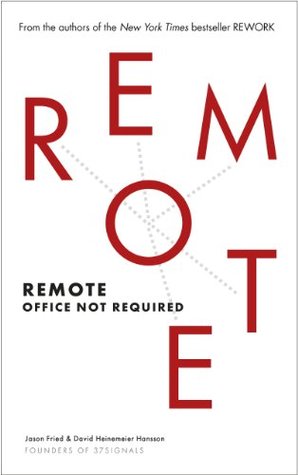More on this book
Community
Kindle Notes & Highlights
The big transition with a distributed workforce is going from synchronous to asynchronous collaboration.
If there’s just no getting around the time-zone issue—e.g., you find a superstar designer in Shanghai and you’re in LA—well, you’re probably going to have to work without a lot of real-time collaboration. That’s not ideal; in fact, in most cases we think it’s more of a challenge than it’s worth—but some companies still manage to get it right when the payoff is big enough.
you need everything available to everyone at all times.
The point is to avoid locking up important stuff in a single person’s computer or inbox.
When you and your coworkers are sitting in the same place, it’s easy to feel that you’re up to speed on what’s going on in the company.
Working remotely doesn’t automatically create that flow.
A lot of the petty evaluation stats just melt away.
if you’re going to give it a shot, give it a real shot. Try it for at least three months.
Forcing everyone into the office every day is an organizational SPoF.
Additionally, AFA employees who do not otherwise work remotely are asked to do so at least once or twice per month so they’ll be ready if they have to during a disaster.
We believe that these staples of work life—meetings and managers—are actually the greatest causes of work not getting done at the office.
For example, find a co-working facility and share desks with others in your situation.
Cabin fever is real, and remote workers are more susceptible to it than those forced into an office.
A manager’s natural instinct is to worry about his workers not getting enough work done, but the real threat is that too much will likely get done.
should the answer be “no,” you can treat it as an off-day and explore the Five Whys
Everyone gets a $100 monthly stipend for a health club membership, and we cover the cost of weekly fresh fruit and vegetable deliveries from local farmers.
To give it a proper try, you need to set free at least an entire team—including project management and key stakeholders!
Given how hard it is to find great people, you should be doing your utmost to keep them.
Throwing away all that knowledge and good spirit is not only dumb, it’s expensive.
Keeping a solid team together for a long time is a key to peak performance.
That task is insurmountable if you’ve stacked your team with personalities who tend to let their inner asshole loose every now and again.
Remember: sentiments are infectious, whether good or bad.
It’s never a good idea to let poisonous people stick around to spoil it for everyone else,
a manager of remote workers needs to make an example of even the small stuff—things like snippy comments or passive-aggressive responses.
No assholes allowed. But for remote work, you need to extend it to no asshole-y behavior allowed, no drama allowed, no bad vibes allowed.
don’t look at remote work as a way to skimp on salaries;
You can’t effectively manage a team if you don’t know the intricacies of what they’re working on.
a clued-in manager does not need to manage the chairs.
If you treat remote workers like second-class citizens, you’re all going to have a bad time.
The lower the ratio of remote worker to office worker, the more likely this is to happen.
When New York City’s subway system was plagued by crime and vandalism in the 1990s, New York’s Police Commissioner William Bratton forced his commanders to use the subway. When they saw with their own eyes how bad things were, change soon followed.
Getting stuff done while working remotely depends, first, on being able to make progress at all hours.
Start by empowering everyone to make decisions on their own. If the company is full of people whom nobody trusts to make decisions without layers of managerial review, then the company is full of the wrong people.
people are often scared to make a decision because they work in an environment of retribution and blame.
you must make sure that people have access, by default, to everything they need.
Most companies start out by adopting the reverse policy: everyone is only granted access to information and applications on a need-to-know basis.
everyone gets a company credit card and is told to “spend wisely.”
There’s no begging to spend money on needed equipment to get the work done,
In reality, it’s overwork, not underwork, that’s the real enemy in a successful remote-working environment.
This might sound like an employer’s dream: workers putting in a ton of extra hours for no additional pay! But it’s not. If work is all-consuming, the worker is far more likely to burn out.
If a worker’s motivation is slumping, it’s probably because the work is weakly defined or appears pointless, or because others on the team are acting like tools.
But unless you travel to the other end of the world, that’s immensely doable.


